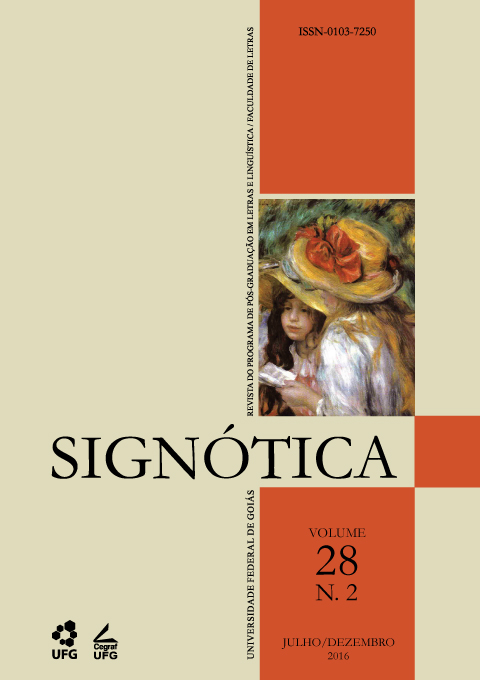The treatment of the semantic phenomena homonymy and polysemy in Portuguese language textbooks
DOI:
https://doi.org/10.5216/sig.v28i2.35623Keywords:
Education, Semantics, Homonyms, Polysemy.Abstract
This paper shows the treatment of the semantic phenomena homonymy and polysemy in textbooks of Portuguese as the first language. The studies on the history of Portuguese as school subject (SOARES, 2002) and on the concepts of homonymy and polysemy (PASCCHOALIN; SPADOTO, 2008; PERINI, 2005; PIETROFORTE; LOPES, 2005) were used as the basis of this research. From a qualitative analysis of the data found – concepts, examples and textbook exercises –, besides observing a substantial irregularity in the treatment of the homonymy and polysemy in the analyzed textbooks, it was also possible to see that the space reserved for semantic issues is still very limited, if compared to the space reserved to the formal aspects of language.Downloads
Download data is not yet available.
Published
2016-11-23
How to Cite
MARTINS, Lauriê Ferreira; ALMEIDA, Débora Ribeiro de; SAMPAIO, Thais Fernandes. The treatment of the semantic phenomena homonymy and polysemy in Portuguese language textbooks. Signótica, Goiânia, v. 28, n. 2, p. 457–480, 2016. DOI: 10.5216/sig.v28i2.35623. Disponível em: https://revistas.ufg.br/sig/article/view/35623. Acesso em: 24 dec. 2025.
Issue
Section
Article
License
Author (s) authorize Signótica to publish an article, if accepted, signing its contribution as original and not submitted to another publisher for publication. In case of acceptance and publication, Signótica's articles are Creative Comons BY-NC-ND (Attribution + Non-Commercial + Non-Derivatives)





1.png)





